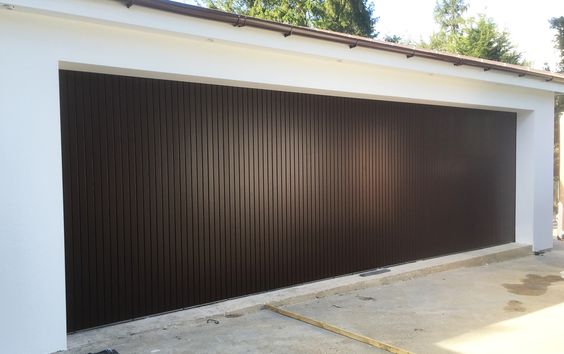As a homeowner faced with the need to replace my garage door springs, the question of whether I could opt for a different type loomed large.

I’ll share my journey of delving into the intricacies of garage door springs, understanding the implications of a switch, and the factors to consider when contemplating such a pivotal decision as stated in Garage Door Repair.
Chapter 1: The Need for Replacement
The journey began when the telltale signs of wear and tear on my garage door springs became apparent. The occasional squeaks, hesitations, and visible gaps signaled that a replacement was inevitable. This prompted me to explore the possibilities, leading me to question whether I could introduce a different type of spring into the equation.
Chapter 2: The Two Primary Types of Garage Door Springs
Understanding the options at hand was paramount. Garage doors primarily use two types of springs—torsion springs and extension springs. Torsion springs, mounted above the door, utilize torque to counterbalance the weight. On the other hand, extension springs, often seen on either side of the door, stretch and contract to provide the necessary force. Each type has its unique characteristics and applications.
Chapter 3: The Implications of Switching Spring Types
The pivotal question arose: could I replace my existing torsion springs with extension springs, or vice versa? While the idea seemed plausible, it quickly became apparent that such a switch wasn’t as straightforward as it sounded. The entire garage door system is calibrated to work with a specific type of spring, considering factors like weight distribution, size, and the mechanics of the door.
Chapter 4: Weight Distribution and Garage Door Dynamics
A critical factor in the spring replacement dilemma is the weight distribution of the garage door. Torsion springs are adept at handling heavier doors, distributing the load more evenly. Extension springs, on the other hand, work well with lighter doors. Attempting to replace torsion springs with extension springs on a heavy door could result in inadequate counterbalance, affecting the door’s smooth operation and potentially causing damage.
Chapter 5: Compatibility with Garage Door Mechanism
Garage door systems are engineered with specific types of springs in mind. The pulley systems, cables, and overall mechanics are designed to harmonize with either torsion or extension springs. Introducing a different type might disrupt this delicate balance, leading to operational issues, increased strain on components, and potential safety hazards.
Chapter 6: Safety Considerations
Safety is paramount when dealing with garage door springs. Torsion springs, by design, are generally considered safer because they are mounted above the door, reducing the risk of accidents. Extension springs, while common, pose a higher risk of snapping, potentially causing injury or property damage. Understanding these safety dynamics is crucial when contemplating a switch.
Chapter 7: Seeking Professional Guidance
Realizing the complexities involved, I sought the expertise of a professional garage door technician. Their assessment of my specific garage door system, weight distribution, and compatibility considerations proved invaluable. They emphasized that garage door spring replacement is not a one-size-fits-all endeavor and requires a tailored approach based on the unique characteristics of each garage door.
Chapter 8: Cost Considerations
While contemplating a switch between garage door spring types, the financial aspect played a role in my decision-making process. The cost of retrofitting the entire system to accommodate a different type of spring, including potential modifications to the pulley system and cables, added up. Balancing the desire for change with practical financial considerations became a crucial aspect of the decision.
Chapter 9: Exploring Alternative Solutions
Rather than replacing one type of spring with another, exploring alternatives within the same category emerged as a viable solution. Upgrading to high-cycle torsion springs or opting for corrosion-resistant extension springs provided enhancements without the need for a drastic switch in spring types. This compromise allowed me to address wear and tear concerns without compromising the integrity of the garage door system.
Chapter 10: Conclusion – A Springs Harmony
In conclusion, the quest to replace garage door springs with a different type unfolded as a journey of discovery. Understanding the intricacies of torsion and extension springs, considering weight distribution, compatibility, and safety factors, and seeking professional guidance were pivotal in making an informed decision. While the desire for change was present, the harmony between the existing garage door system and its springs prevailed as the guiding principle.
Overall, as per Garage Door Repair, for homeowners contemplating a similar journey, the key takeaway is to approach garage door spring replacement with a holistic understanding of the system’s dynamics. While change can be enticing, the integrity and safety of the garage door should remain at the forefront of decision-making. In this exploration, I discovered that sometimes, embracing the inherent harmony of the existing setup is the most prudent and effective path forward.
Braintree Garage & Overhead Doors
0 Campanelli Dr, Braintree, MA 02184, United States
781-678-4910
